Women Over 50 Are Losing 100+ lbs With This "Super Fiber"
If you love food as much as we do, going without for the sake of slimming down can feel like torture. But what's the alternative? For the founder of Hungry Girl, Lisa Lillien, it's transforming the foods you love into skinnier versions that can help you lose weight. And Lillien has developed thousands of recipes that do just that. Scores of Hungry Girl followers have lost 100+ lbs – and kept it off! – by eating Lillien’s lightened-up recipes. Lillien's latest way to transform delicious foods into delicious foods that trim? It's called viscous fiber. And it worked wonders for Regina Kogan, 55, down 116 lbs, and Kelly DeBlander, 60, who lost 155 lbs. Read on to discover the science behind the weight loss power of viscous fiber, how viscous fiber foods helped Regina and Kelly to reach their happy weight and delicious recipes to get you started.
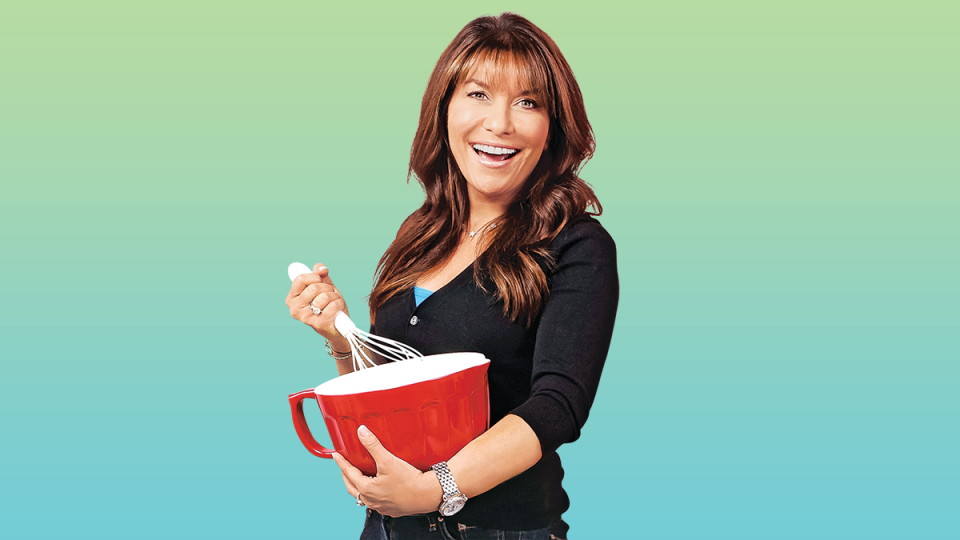
What is fiber?
Fiber is a type of carbohydrate that the human body can't completely break down, but it plays a key role in improving digestion, curbing hunger, steadying blood sugar and boosting weight loss. One of the reasons that getting more fiber can make you healthier is because, while you can't break the fiber down, good bugs living in your gut can. And all that fibrous food makes them healthy enough to defeat the bad bugs and also release byproducts like butyrate that can make you healthier.
The recommended daily intake for fiber is at least 25 grams for women and 30 to 35 grams for men. That said, most people only get 15–17 grams a day. (Click through to learn more about how much fiber you need to lose weight.)
Fiber is found mostly in plant foods like vegetables, fruits, beans, whole grains, nuts and seeds. And there's actually several different types of fiber that feed different 'good guy' bacteria and have different benefits. Lately, nutrition experts have been buzzing about a particular type called "viscous fiber."
What makes viscous fiber special
“It’s a special super-fiber much more powerful than regular fiber that can provide a great way to lose weight,” says Cleveland Clinic nutrition expert Mark Hyman, MD. What sets viscous fiber apart? Unlike indigestible roughage from, say, bran or raspberry seeds, viscous fiber absorbs significant fluid, turning into a thick gel that is very slowly broken down. Indeed, dissolving just a smidge of viscous fiber turns a full glass of water into gel — a process that can do remarkable things within our bodies (see more below) and make us feel fuller longer.
Foods that are particularly rich in viscous fiber include:
Barley
Beans
Lentils
Sweet potatoes
Psyllium husk
Citrus fruits
Apples
Brussels sprouts
Flaxseeds
How viscous fiber foods trigger weight loss
Scientists say when we eat viscous fiber foods, the viscous fiber absorbs water to swell up and creep through our systems at a snail’s pace. As it travels through our intestinal tract, it helps blunt our appetites, reduce production of fat-storage hormones, and feed the good bacteria that produce release butyrate, which can act as a powerful anti-inflammatory agent in the gut. (Butyrate can also help heal leaky gut, a condition that may slow weight loss. Click through to learn about simple swaps that heal leaky gut naturally.)
The effect is so intense, research reported in The Journal of the American College of Nutrition shows that viscous fiber, compared to other types of fiber, actually deserves all the credit for helping dieters eat less and lose more weight.
How much viscous fiber leads to weight loss
Additional research determined that adding a mere 8 grams of viscous fiber a day — the amount in three-quarters of a cup of black beans or one large sweet potato — sets us up to burn 86 percent more belly fat and lose 73 percent more weight than if we skipped it. In many studies, a two- to five-gram viscous fiber supplement a day “resulted in significant weight loss in overweight individuals,” says Dr. Hyman, a fan of a version called glucomannan. (Another viscous fiber, beta glucan, can also help you slim. Click through to learn more about the fiber, which can also support the immune system and balance blood sugar.)
Also worth noting: As these good gut bacteria metabolize viscous fiber, the byproducts of their consumption trigger additional benefits linked to weight control and overall health. “That includes lower cholesterol, lower blood sugar and insulin, cancer prevention and much more,” according to Dr. Hyman. He suggests aiming for at least 20 grams of total fiber daily, and you’ll easily get 10 or more grams of viscous fiber.
How Hungry Girl uses viscous fiber foods
With a newsletter following of over 1 million daily readers, Lillien's "goal is to find easy ways to make food we crave healthy." Proof that approach works can be found partly in the fact that Lillien herself has kept off three sizes for over a decade. While she has a host of tips for trimming down, focusing on viscous fiber foods seems to have had the most impactful results. Lillien got her start looking for satisfying ways to lose weight. “I learned early on to sneak fiber in wherever I can. It helps give meals a bigger volume for fewer calories,” she says. “Fiber also fills you up and keeps you content a long time.”
Fiber success story: Kelly DeBlander, 60
After a lifelong struggle with spare pounds, “I had a long list of health issues,” recalls Kelly DeBlander, 60, a California loan officer. “My doctor suggested weight-loss surgery.” Scared, Kelly decided to try Weight Watchers yet again. As she began to make a little progress, “a friend gave me a Hungry Girl cookbook.” Kelly instantly loved the fiber-rich twists on comfort food. “Fiber from foods like apples, oats and beans keeps my hunger at bay, and when I’m not hungry, I’m much more successful.” Within 10 months, she was down 100 pounds.
All told, Kelly dropped 155 pounds — and is keeping it off with ease. “My health is so much better, and I now have more energy than I ever dreamed of having,” says Kelly. “I hope everyone will try Lisa’s recipes and feel as great as I do!”
Fiber before and after: Regina Kogan, 55
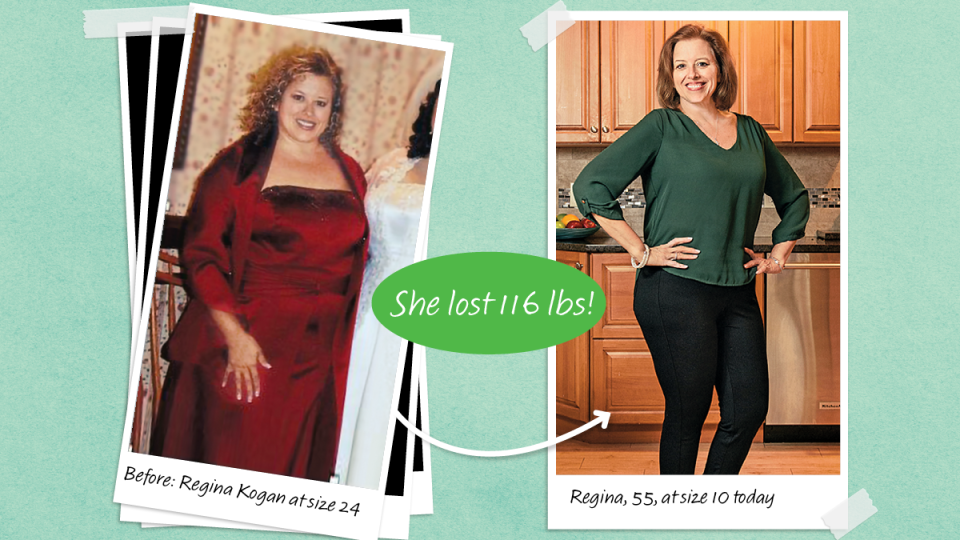
For decades, Regina Kogan gained, dieted and gained again. “Restricting foods backfired for me,” admits the New York retiree, 55. She tried Weight Watchers, where no food is off-limits; still, she struggled at times. Rejoining for the sixth time, she signed up for a free daily email at Hungry-Girl.com. “Finally, I had recipes to satisfy any craving and keep me full,” recalls Regina, who began making her easy foil-pack and sheet-pan meals. “I love to experiment with things like oats, beans and apples because higher-fiber foods work well for me.”
Regina found herself losing up to 9 pounds a week, 116 pounds in all. “And I’ve maintained for four years.” Despite a rare heart issue, “my cardiologist says I’m in better shape than I was in my 30s. My heart is strong and I feel amazing. It literally saved my life.”
Bonus health benefits
Viscous fiber foods don’t just help you lose weight – they can also enhance many areas of your health. Indeed, a study published in Nutrition Journal revealed that after eight weeks of increased viscous fiber, study subjects lowered their fasting blood sugar by 44 mg/dl. Viscous fiber foods can also increase the diversity of gut bacteria, warding off conditions like inflammatory bowel disease and Crohn’s. What’s more, viscous fiber foods can bind to cholesterol in the gut to reduce absorption. Research shows that, when compared to less viscous fibers like wheat bran, viscous fiber foods are key for lowered LDL “bad” cholesterol. So, even if you’re not aiming to shed stubborn pounds, there’s no harm in enjoying some viscous fiber foods!
4 delicious recipes packed with viscous fiber
To get plenty of slimming super fiber, add top sources like apples, bananas, oranges, avocado, cruciferous vegetables, chia, flax, oats and shirataki noodles. Many Hungry Girl followers use the Weight Watchers plan; others simply aim for 1,300 fiber-rich calories a day. A free app like MyFitnessPal makes tracking easy. We’ve got viscous fiber-rich ideas here, below. Find more inspiration in Lisa Lillien’s books and at online at Hungry-Girl.com, where you can also subscribe to the daily newsletter. (Want a good-for-your dessert idea? Click through to learn how to make fiber-rich black bean brownies.)
1. Banana Oat Pancakes
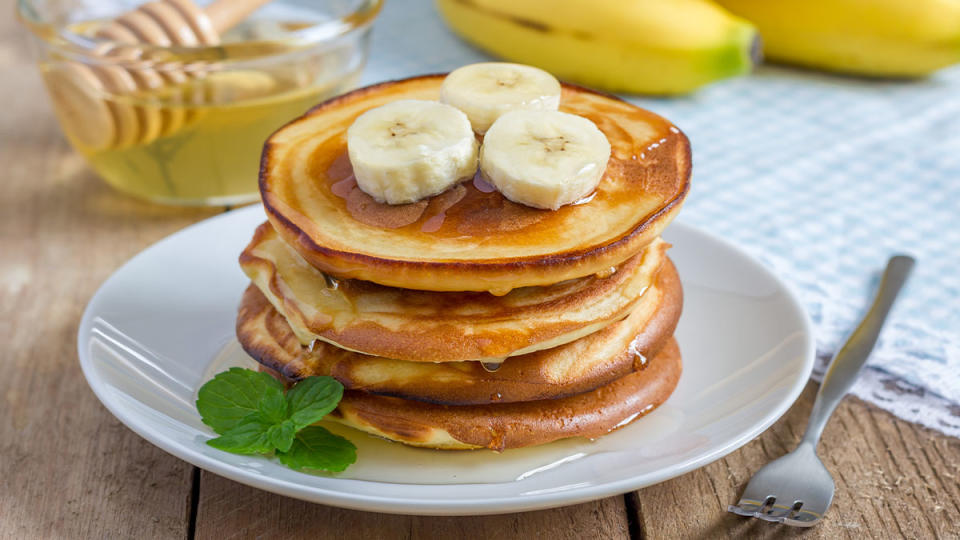
In food processor, blitz ? cup oats into powder. Blitz in 1 banana, ? tsp. baking powder, 1 punch of salt and 5 Tbs. nut milk. Cook in a pan with cooking spray.
2. Avocado-Orange Salad
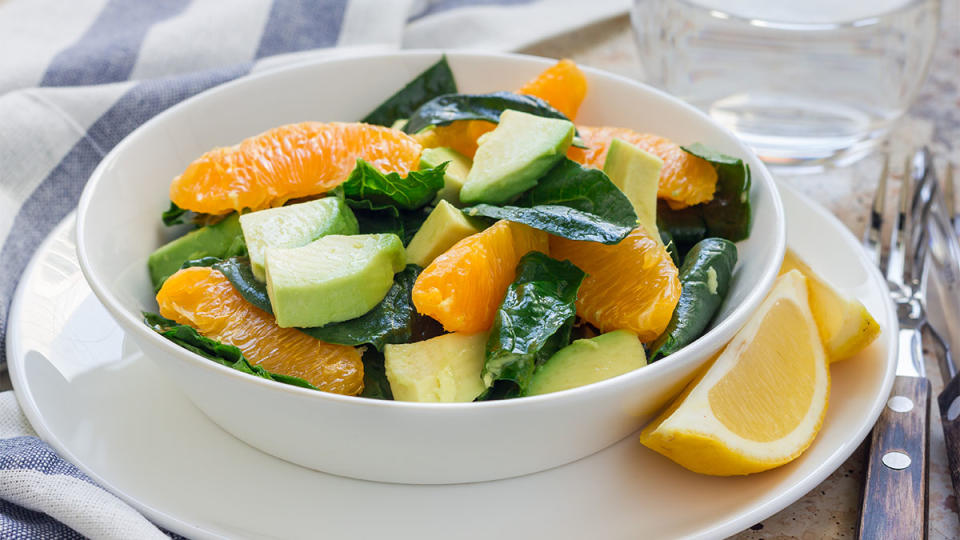
Combine 4 oz. cooked protein, ? cup orange segments and assorted fruit and ? avocado over salad with any low-calorie dressing.
3. Baked Sweet Potatoes
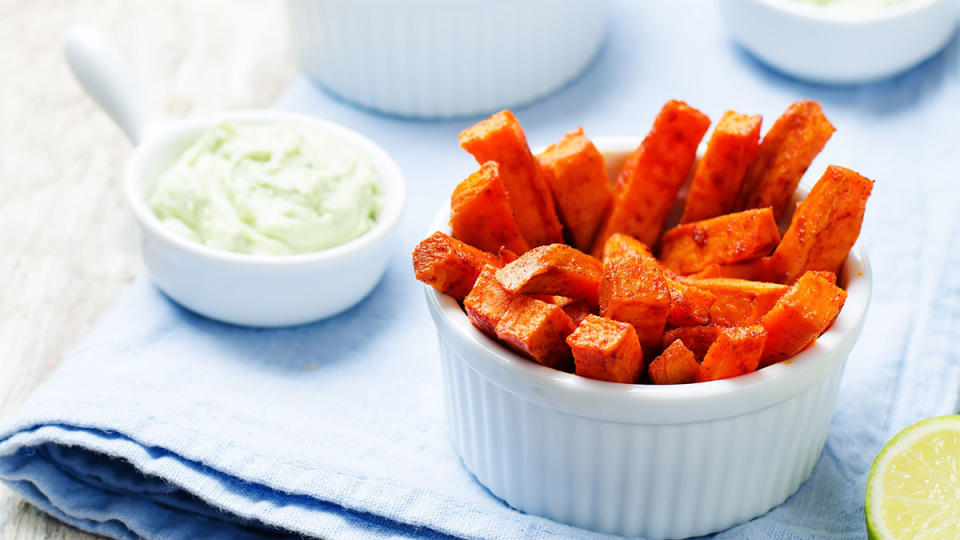
Arrange sliced sweet potato on a lined sheet and mist with cooking spray; season to taste and bake at 400°F for 30 minutes. Dip in guacamole, if desired.
4. Shirataki Noodle Soup
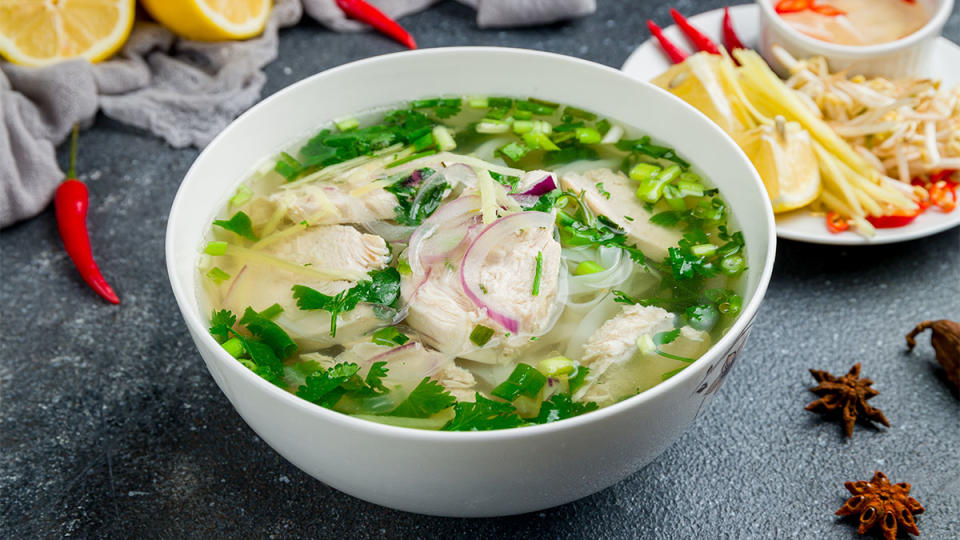
Simmer veggies, 4 oz. chicken and a dash of ginger in 4 cups broth. Add 8 oz. rinsed shirataki noodles (also called konjac noodles) and heat through. (Click through to learn more about konjac noodles and weight loss.)
For more on how fiber can enhance your health, click through to these stories:
Easy, High Fiber Foods That Will Help Your Digestive Health
Save Money and Increase Your Daily Fiber Intake by Consuming Pulp That’s Left After Juicing
Drop up to 11 Pounds a Week, Lower Blood Sugar and Cholesterol on This ‘Konjac’ Fiber Detox
This content is not a substitute for professional medical advice or diagnosis. Always consult your physician before pursuing any treatment plan.
This article originally appeared in our print magazine, Woman's World.
